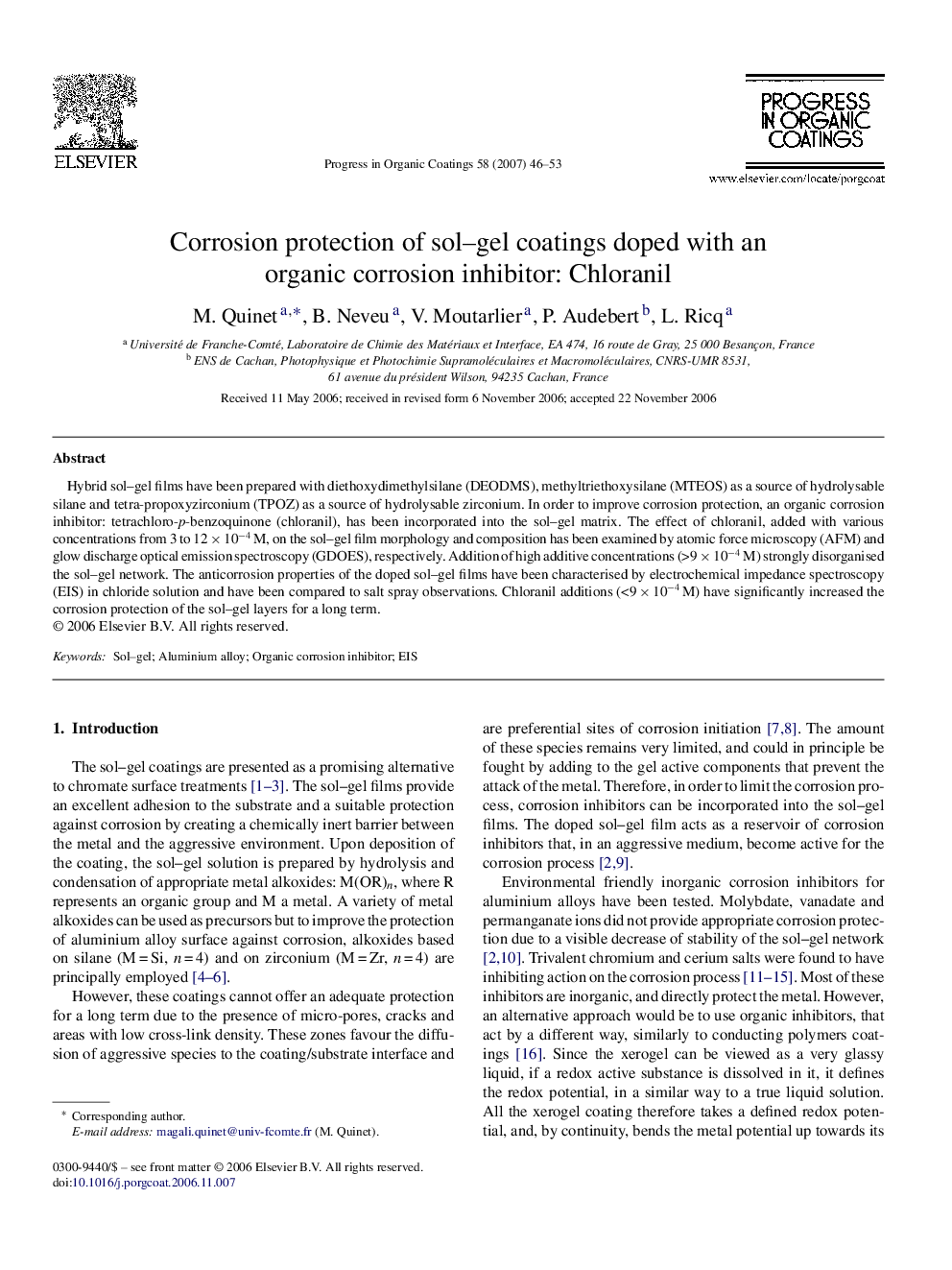| Article ID | Journal | Published Year | Pages | File Type |
|---|---|---|---|---|
| 693685 | Progress in Organic Coatings | 2007 | 8 Pages |
Abstract
Hybrid sol-gel films have been prepared with diethoxydimethylsilane (DEODMS), methyltriethoxysilane (MTEOS) as a source of hydrolysable silane and tetra-propoxyzirconium (TPOZ) as a source of hydrolysable zirconium. In order to improve corrosion protection, an organic corrosion inhibitor: tetrachloro-p-benzoquinone (chloranil), has been incorporated into the sol-gel matrix. The effect of chloranil, added with various concentrations from 3 to 12Â ÃÂ 10â4Â M, on the sol-gel film morphology and composition has been examined by atomic force microscopy (AFM) and glow discharge optical emission spectroscopy (GDOES), respectively. Addition of high additive concentrations (>9Â ÃÂ 10â4Â M) strongly disorganised the sol-gel network. The anticorrosion properties of the doped sol-gel films have been characterised by electrochemical impedance spectroscopy (EIS) in chloride solution and have been compared to salt spray observations. Chloranil additions (<9Â ÃÂ 10â4Â M) have significantly increased the corrosion protection of the sol-gel layers for a long term.
Related Topics
Physical Sciences and Engineering
Chemical Engineering
Process Chemistry and Technology
Authors
M. Quinet, B. Neveu, V. Moutarlier, P. Audebert, L. Ricq,
